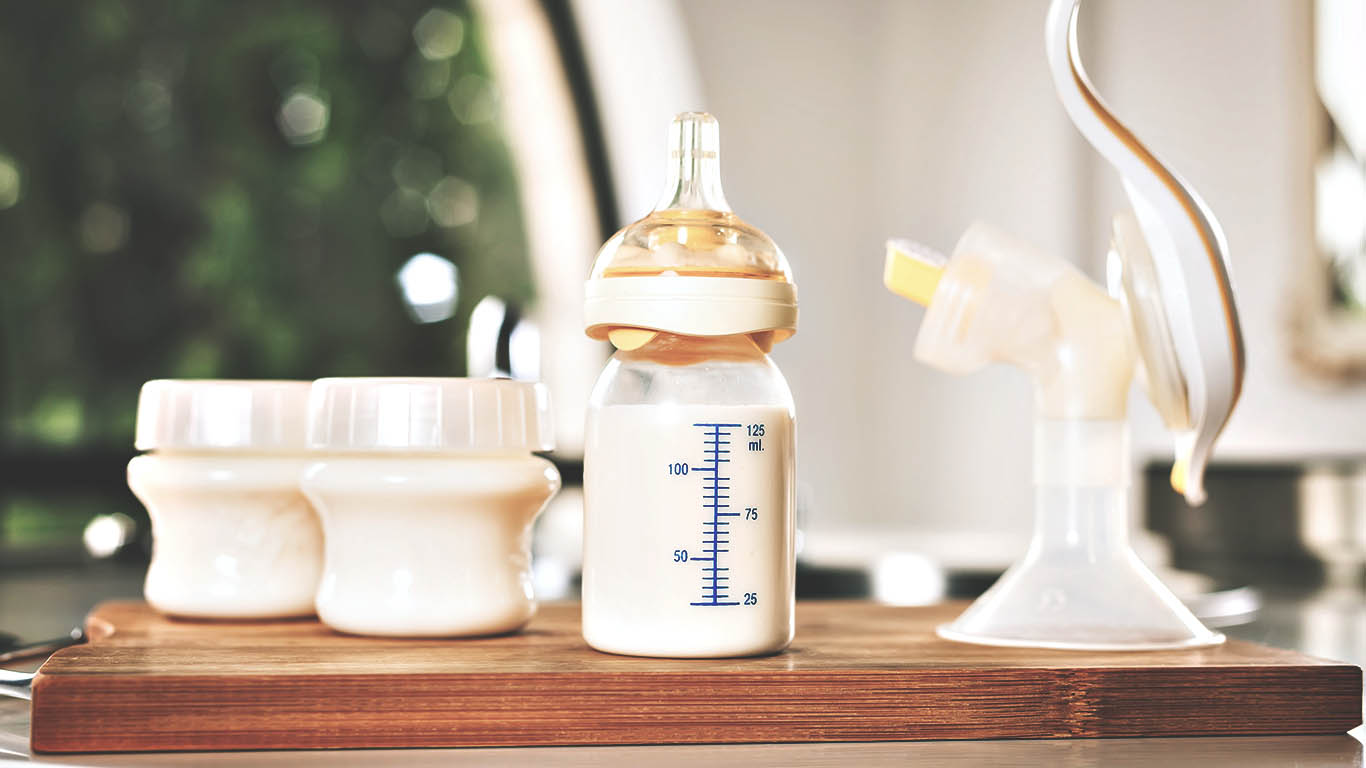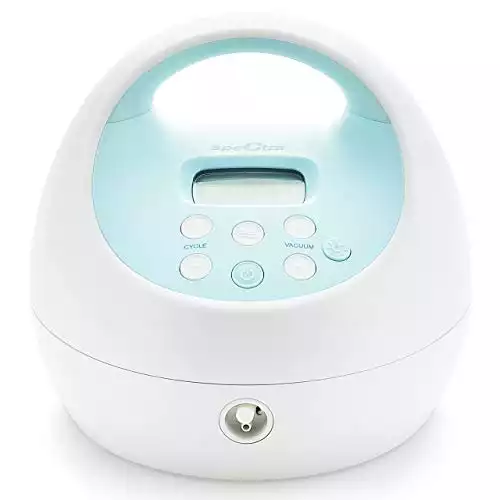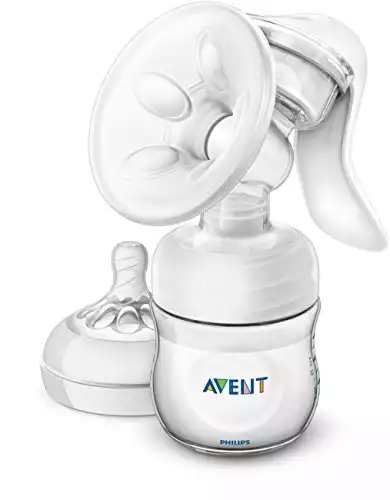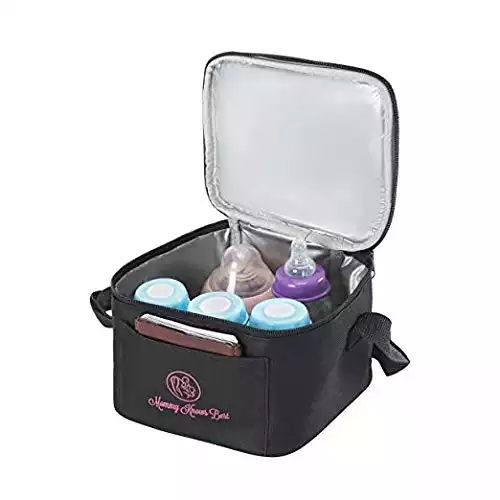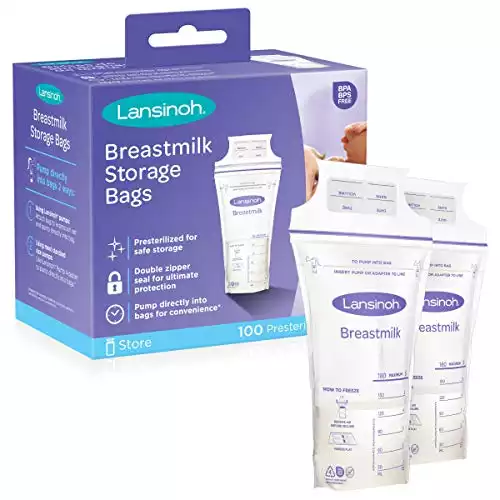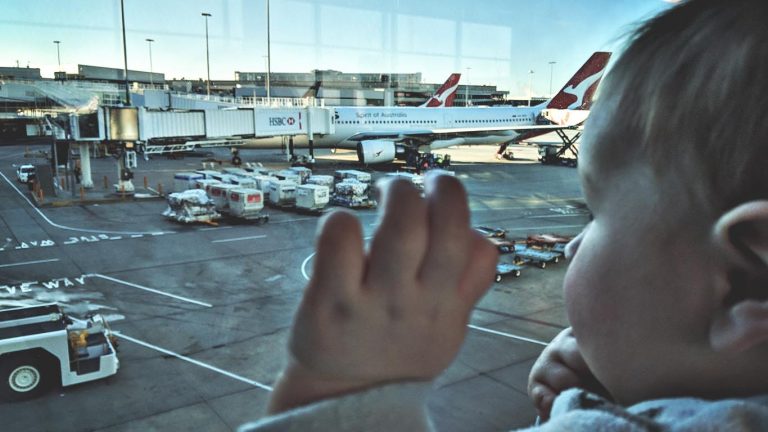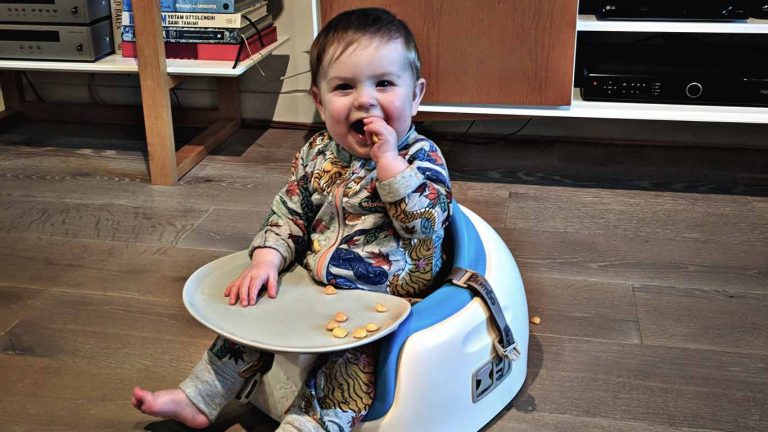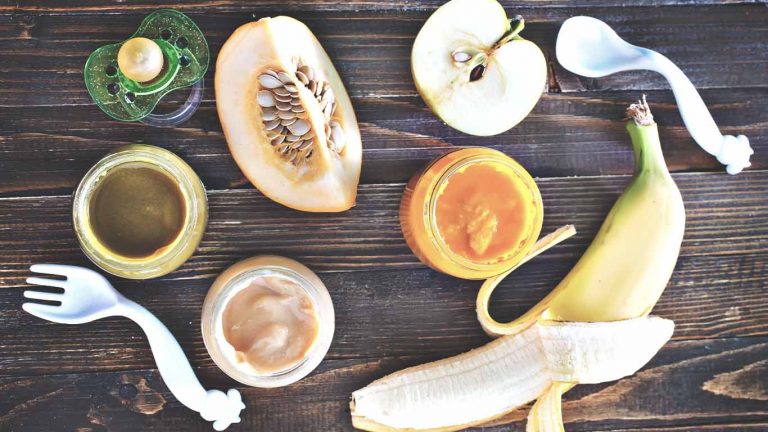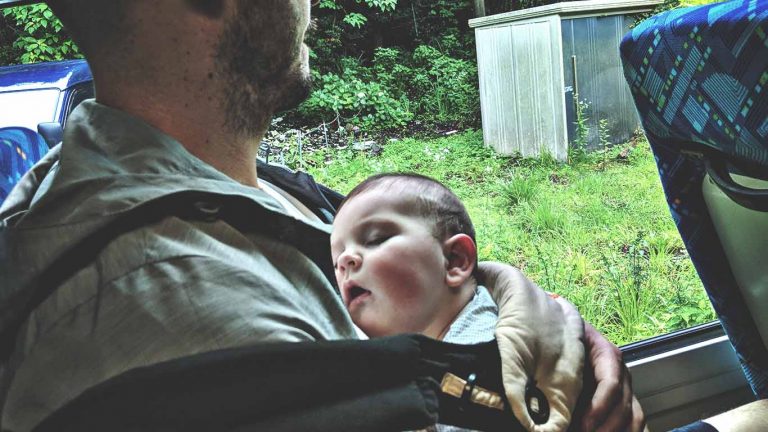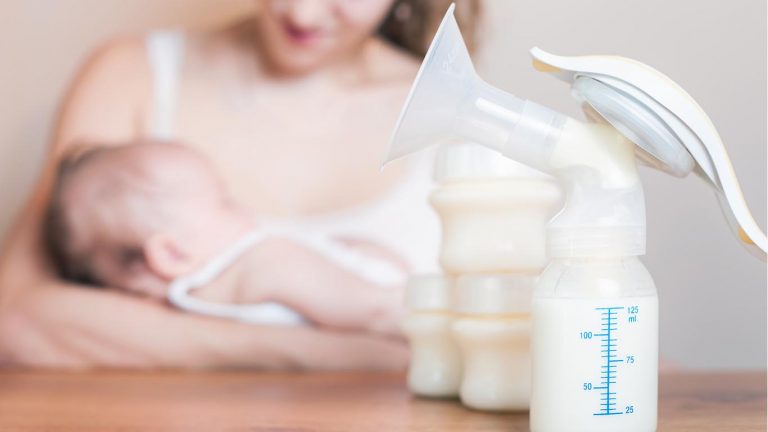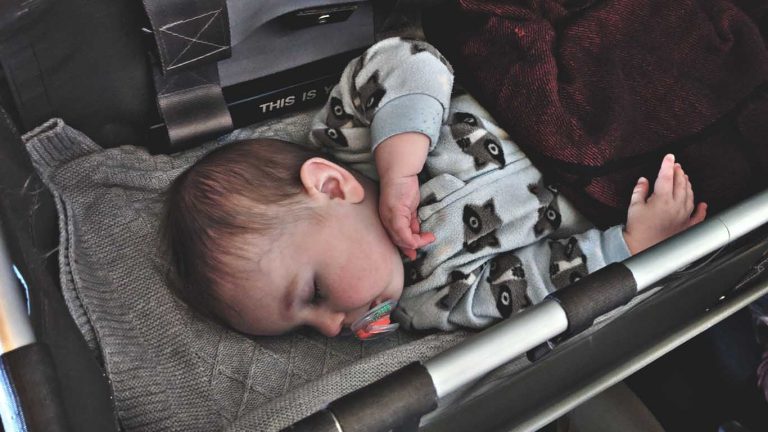Pumping your breast milk is a fact of life for the working mum or for the frequent traveling mum.
If you are heading out on a well-deserved vacation from your baby, a work trip, or you simply have a baby that prefers to drink from a bottle, then you’ll need to pump your breast milk while traveling.
Pumping while you travel can seem pretty scary. With ever changing travel regulations (that differ between countries) and the amount of gear you can buy that all promises to make your life easier, there’s a lot to get your head around.
This guide will teach you everything you need to know from what to pack, the best breast pumps for travel, tips on keeping your milk supply up and how to safety travel with a store of your milk.
What do I need to pack?
Before you head out on your trip, list out and gather everything you need to pump and store your breast milk safely. Let’s look at the items you will need to consider packing:
- Breast pump – Decide on packing your electric or manual pump. We will look at pros and cons in a bit.
- Accessories for your breast pump – tubing, flanges, power cord, battery pack if available
- Milk Collection Bottles and caps
- Milk Collection Bags – You can use these bags for storing flat or for freezing.
- Permanent Marker – Grab a Sharpie or pen to label the date and time of collection.
- Batteries – Bring extra sets!
- Power Adapter – You will need this for international travel
- Small cooler – You will need a travel cooler that keeps your milk at the right temperature.
- Ice Packs – frozen solid if possible to pass through security without a hitch
- Nursing Cover – Something like this that’s convenient and stylish.
- Nursing Pads – I preferred these disposable ones. (you never know when you’ll be able to get washing done)
- Hand Sanitizer – You need to keep your hands clean before and after pumping. Remember that you’ll need the 3.4 oz. travel size.
- Travel-Size Container of Dish Soap – An easy way to keep things clean while traveling.
- Breast Pump Wipes for Quick Cleans – These wipes are great for quick cleaning your pump accessories while you are out and about.
- Optional Things – hands free pumping bra, nursing pillow
The best type of breast pump for travel
You have factors to consider in choosing which breast pump to take with you on your trip. As always, there are a ton of options available, so just think through what would be best for you and your baby.
1. Medical Grade Breast Pump
Medical grade breast pumps are heavy duty pumps, and usually available at hospitals and some pharmacies.
Pros to a Medical Grade Breast Pump:
- You don’t have to pack it. You can rent it from a hospital or pharmacy in your destination city.
- These pumps are great if you struggle with producing a good milk supply.
- This is an excellent option if you exclusively pump your breast milk as well.
- Best for expressing the most milk.
- Can pump both breasts at the same time
Cons to a Medical Grade Breast Pump:
- Very bulky and cumbersome to travel with.
- Needs to plug into a power supply to work.
- If you are renting a pump, you won’t have a way to express milk with you on the plane.
If you need a medical grade breast pump, you might look into calling ahead to a hospital or pharmacy at your destination city to inquire about renting a breast pump for your stay.
If you don’t find what you need from a hospital, seek out a local lactation consultant service in the area, and they should be able to help you find a pump to rent.
2. Portable Electric Breast Pump
If you know you will need to pump often, then you could purchase a transportable, electric breast pump. Many of these come packaged with a bag or backpack.
Pros of a Portable Electric Breast Pump:
- Packs in a bag or backpack.
- Most models come with a battery pack and/or car charger.
- Great for pumping often.
- If you already have to pump often, then you probably have one.
- This pump does the work for you.
- Can pump both breasts at the same time (if you have a double pump).
Cons of a Portable Electric Breast Pump:
- Takes up room as a carry-on item (Your airline might waive it as a medical device. Double-check with the airline.)
- Expensive up-front cost.
Many mums choose to have their portable breast pump with them on the plane as a carry-on item.
You don’t want to get stuck in a plane or in the airport without a way to pump if you are delayed or if luggage goes missing. You’ll want to look into buying an electric adapter if you are traveling out of the country.
If you are still researching your options, we recommend the Spectra Baby S1
Even if you decide to bring your electric pump you should still consider having a manual pump in your bag on hand as a backup in case something goes wrong with your electric pump.
3. Manual Breast Pump
If you are only going to be away for a quick trip and you are simply trying to keep up your supply while gone, then a manual pump might be a good option. Mums who have the ability to nurse almost exclusively may not need the expenses associated with frequent pumping.
Pros of a Manual Breast Pump:
- Inexpensive (Seriously, you are out $10-$20)
- Easy to store in a carry-on.
- Easy to clean
- Great for the mum who only needs to pump occasionally
Cons of a Manual Breast Pump:
- Require more effort because you have to work the pump with your hand
- Manual pumps get less milk from the breast.
- You can only pump one breast at a time.
- Takes a longer time to pump
The Philips Avent is our favorite manual pump.
Keeping breast milk fresh while traveling
Breast milk has a refrigerator shelf life of up to 4 days maximum. But only about 24 hours in a cooler.
You’ll need to have a cooler that can keep your milk consistently around 40°F, and you will need to find access to a refrigerator.
You can ask your hotel for a room with a refrigerator or ask the hotel to store your milk for you in a medicine refrigerator if a mini-fridge is not available for your room.
This video has some good tips on packing and traveling with breast milk.
Traveling by car
If you are traveling by car, you could consider purchasing a car cooler that plugs into a power source – either with the car adapter while you are driving or an electric outlet for when you arrive at the hotel.
Traveling by plane
If you are travelling by plane, then you will need a small cooler to hold your milk supply. You can keep it cool with frozen ice packs.
Security might confiscate ice packs that have thawed into the liquid state or are slushy. So, if possible, have your ice packs frozen solid when you pack them.
At the airport, you will want to decide if you check your cooler with your luggage or use it as a carry-on item. If you are nervous about switching planes and being separated from your luggage, then you might want to choose to keep your milk with you.
But if you only have one stop, you can check your milk cooler, and it will stay cold in the hold of the plane.
At your destination
By using a small cooler for milk collection, you can keep your bottles cool for 24 hours. You will need to either use it for the baby after that time or get it to a refrigerator to cool longer and more consistently once you arrive at your destination.
If a refrigerator is not available for storage, you can also keep your cooler full of ice from the hotel ice machine.
You will also need to consider bringing plenty of collection bottles that come with your breast pump as well as pre-sterilized and double-zip breast milk bags.
Once your breast milk is cooled, the CDC recommends keeping it cool. Breast milk can be frozen, but you cannot refreeze breast milk if it thaws. Keep that in mind with your hotel situation and length of your trip.
Do not store breast milk in the door of the refrigerator or freezer. This will help protect the breast milk from temperature changes from the door opening and closing.
If you have a cooler with you and a refrigerator available at your destination, you will have what you need to keep your milk supply safe.
Pumping and breastfeeding in the airport and on the flight
Expressed milk is allowed through security and not subject to volume limitations as it falls under the category of “medicine”. The TSA website states that breast milk can be carried in “reasonable amounts” over the normally 3 oz. limit of other liquids.
The regulations are purposely vague to allow for individual discretion at the security gate. I liked this example I found from this Baby Center post:
“They do it that way so they can review [the milk] on an individual basis. When a mom comes through with milk they’ll probably have a quick conversation with her. They might also ask about her itinerary, so if she’s been gone a day and has a huge quantity of milk, they might question it.”
However, be aware that your breast milk is subject to inspection. When you reach security, notify the agent and remove your milk from your carry-on (leave it in the cooler) and put it in a separate bin supplied by the airport.
There have been no detectable adverse effects to breast milk that has to undergo X-ray screening.
During the screening, it’s not probable, but it’s possible you will be asked to transfer a small amount of your breast milk to a separate container to test it. The small amount for testing will not be suitable for use, but the rest of the breast milk in the original container will still be safe. Just cap it off tightly.
Ice packs, gel packs, and cooling packs are permitted in your carry-on. If possible, have them frozen solid.
The liquid state is what makes them open to further screening. You can also consider packing something that stays solid if thawed, like frozen peas, to avoid losing your ice pack to security.
Nothing in your pump machine will trigger security concerns. Your pump will be fine to go through the screening machine with your other things without alerting TSA about it.
Be aware though that there are no TSA regulations allowing your pump to be waived as a carry-on. Check with your airline before departure to see if you have to count your pump as your carry-on item to consider your travel options.
How to pump while traveling (step by step)
So, to break down your upcoming trip with a pump, here is a step-by-step guide to make it through the airport with everything you need to remember:
- Choose the right pump for your trip: Do you need a medical grade, travel pump, or manual pump? (Consider having a backup manual pump just in case.)
- Decide on the milk storage method you need for your trip: What cooler, ice packs, and milk collection bottles and bags do you need?
- Research your travel destination: Do you have places for relatively convenient pumping? What are your milk storage options once you arrive? Will you have access to a refrigerator, microwave, and sink for storage and clean up?
- Make a pumping plan: When do you plan to pump? How will you pump in a way that you feel comfortable? (i.e. consider your outfits, packing a nursing cover up, pick a good airline seat for privacy, explore possible pumping places in the airport)
- Follow through with the plan: Remember why pumping is important to you and your baby and find ways to be flexible if your original plan doesn’t work.
- Clean your pump: Use hot soapy water if you have time for the accessories. Remember to pack a travel bottle of dish soap for the hotel. Consider purchasing some breast pump travel wipes for quick cleans.
- Store your milk: Keep your cooler and collection items close by. Be sure to label your bottle or bag with a permanent marker, noting the time and date.
- Bring your milk home: You could look at shipping your milk overnight (see below), freezing your milk, or just keep it cold in the cooler until you get home. How long is your trip? You want to make sure your milk stays fresh.
Pumping while traveling without your baby
If you plan on traveling for awhile without your baby, you have a few extra things to worry about.
Keeping Your Milk Supply Up
It is absolutely possible to keep up your supply while you are gone, and you can continue nursing your baby when you arrive at home without worries of your baby rejecting your breast when you return.
Here are some great ideas for keeping up your supply on your trip.
- Stay hydrated – Nursing and traveling both take a lot of hydration, and yet, sometimes drinking plenty of water can fall off the radar if you aren’t careful. Take an empty water bottle with you through airline security and fill it up once you pass into the airport. Or, you can purchase a bottle of water and keep refilling it.
- Stick to your schedule – Your milk supply does best when you are consistent and thorough with your pumping sessions. Aim to pump a full session when you can to empty your breasts and keep track of when you need to pump.
- Fenugreek – Recommended for when your supply starts to produce lower amounts. Warning: Your sweat will smell like maple syrup? What?!
- Have Healthy Snack – Find your favorite recipes for lactation cookies or purchase some lactation bars to keep yourself fueled on the trip. Other nursing moms swear by drinking Mother’s Milk Tea for lactation production as well.
- Trigger Your Let Down – There is a let down setting on many electric pumps, but if you need some help getting your milk to start, bring something that reminds you of your baby (like a blanket or onesie), look through your phone pictures of your little one, or pull up a YouTube video of a crying baby.
- Enlist the Help of a Lactation Consultant – If you will be gone for more than a week, you might find it worth your time to see an International Board Certified Lactation Consultant to help walk you through this time away from your baby. They will be able to provide you with tips and resources to keep your supply going and what to do when you return home.
Sending Breast Milk Home
Keeping your milk fresh and safe is a crucial step in this pumping while travelling process. Plus, if you are like I was when I was nursing, you might not be able to store up extra breast milk before you leave.
If your baby needs your milk while you are gone because you don’t have access to already stored milk, you can certainly look at overnight shipping your milk home while you are away. This would also be a great option if you are concerned about getting home before your milk expires.
Call ahead to your hotel and see how they can help you. Hotels with a concierge service could gather up all of the milk collection and shipping supplies to have ready for you when you arrive.
From thebump.com:
For my trip, I was fortunate to be staying at a full service hotel. I called ahead to the concierge and they were able to help secure the materials I needed: an in-room refrigerator, a Styrofoam cooler, dry ice, packing tape and a shipping carton.
You will need a refrigerator to freeze the milk in bags, a box or styrofoam cooler to ship the milk, ice packs or dry ice for shipping, packing paper or newspaper to wrap your milk supply, packing tape to secure your container, along with your breast pump and collection bottles and bags.
If a concierge service is not available, you can gather these supplies yourself at a nearby drugstore, and arrange to overnight your breast milk by freezing it and shipping it in a cooler with ice packs.
If it arrives frozen, then it could stay frozen in the freezer until it is needed at home. If it starts to thaw during the shipping process, it will need to be used within the next 24 hours. Re-thawing breast milk is not recommended by the CDC.
If you do not have a way to freeze your breast milk, you can ship cold it in a container of dry ice. Please be careful with dry ice!
Have some gloves with you when you handle it, and wrap your breast milk containers in newspaper to keep them separated from the dry ice.
Check with your mail carrier about regulations because dry ice is considered a hazardous material, so you can only ship with a regulated amount.
8 Tips for pumping away from home
1. Know your rights and do what’s best for your baby
Before you travel, you need to inform yourself of the regulations surrounding breastfeeding, pumping, and carrying breast milk with you.
You absolutely have the right to pump your milk at the airport or in the airline seat, and you have the right to travel with your breast milk whether or not your baby is with you.
Try doing a few Google searches for Your Destination + Pumping Breastmilk to find super relevant information before you fly.
You can take steps to make sure your experience is easier by telling the security agents up front about your breast milk in your cooler.
You can find a relatively private spot in the airport and use a cover up to make yourself feel more comfortable before you pump.
You could also inform your seatmate on the plane that you will need to pump during the flight or talk to the airline attendant about a private spot that might be available on the plane.
Ultimately, this is about the deal you are making with your baby. If your baby needs you to pump breast milk, you can find a way to make it happen.
This is an important phase of your life that is completely unique to raising kids. You’ll never get this time back, so if nursing your baby is important to you, be willing to stick with it while you are gone!
2. Pack the right supplies
Having what you need when you need it is the key to pumping on the go. Be sure to have your pump, batteries, and power cords that you need.
Consider packing a manual pump for a backup if something happens to your electric pump. Have enough bottles and bags to store your milk.
Have extra sets of pumping supplies, like extra batteries, shields and tubing parts, in case something goes wrong. Don’t forget your snacks and water bottle.
Pack a travel-sized container of dish soap for washing your pump parts and bottles. Have some pump cleaning wipes on hand for cleaning while you are away from a sink.
3. Get a room with a microwave and fridge
If possible, try to get a room at the hotel that provides a microwave and a refrigerator. Then, you can be sure your milk supply stays at the proper temperature in the refrigerator (put it on the coldest setting when you arrive at your room).
You can use the microwave to sanitize your pump parts using disposable sanitizing bags. If you have your baby with you, you can also use the microwave to warm up water to sit the cold bottle in before a feeding. This will warm the milk slowly.
Remember to not heat up breast milk directly in the microwave because it does not heat evenly, and the microwave gets the milk too hot.
4. Keep your milk supply up
As you are traveling, keep up your milk supply by pumping regularly, staying hydrated, and stashing healthy snacks that promote good milk supply.
Pump when you can, but try your best to get full sessions of pumping in where you empty your breasts as much as the pump can.
Full pumping sessions give your body a chance to rebuild your supply to its full potential. But, if you can only grab a short session, take advantage of it and pump away.
5. Ask airport staff if there is a special nursing spot
Airport staff members are your best source for finding a nursing and pumping spot. After all, many of them are working and travelling moms just like you!
They’ll know the best places to find the privacy you need without having to sit in a public bathroom stall (avoid this if at all possible!
Public restrooms are not great for staying germ free. Plus, pumping is tough enough without it needing to also be demoralizing and frustrating.)
6. Book a window seat for added privacy
If you know you will need to pump during your flight, book a window seat for some added privacy and make sure you take your nursing cover with you.
Most people probably won’t even notice what you are doing, but it’s always a good idea to let your seatmate know before you take off that you will need to pump.
Then, that person can look the other way while you are getting situated if they feel uncomfortable. You don’t need to worry about how that person reacts though. Just focus on your baby and why you are doing this!
7. On road trips
If you are traveling on a road trip, you will need to consider your pump choice, accessories, and cooler choice as well.
You can pack a travel charger to pump on the go or make sure you have your battery pack, and you can look into purchasing a car cooler to store breastmilk.
If you are traveling with a buddy, then you can pump during the trip if your supplies are close at hand.
However, if you are having to drive and also pump, you can schedule your pumping session around rest stops.
Just prepare for longer stops along the way to give you time to pump, collect properly, store in a cooler, and clean.
For more information about pumping and driving check out this guide from exclusivepumping.com
8. Cleaning your pump
Considering how you will clean your pump is an important step that you don’t want to neglect in preparing for your trip.
Because you are on the go, you might think through multiple ways to keep your pump parts clean on your trip as well.
You have a couple of options if you have a rent house or kitchenette in your room. You can wash the pump accessories in the dishwasher to sterilize them, or you can use hot soapy water and allow them to air dry on a clean towel.
But the easiest way to sterilize while traveling is to use disposable microwave sanitizing bags. You throw all of your pump accessories into one of these bags (don’t worry about the tubing unless some milk accidentally made its way inside the tube), fill it with water, and microwave it for 2-3 minutes (check your bag for specific directions).
Then, your pump parts are ready to go for the next session. Bring an extra bag or two in case your original bag gets a hole or rips accidentally.
If you need to pump while you are in the airport or on the plane, you can purchase these handy Breast Pump Wipes for a quick clean until you can clean them more thoroughly later.
Pump with confidence on your next trip
I hope that this advice has given you the confidence to pump while traveling. Pumping is a way to keep up your nursing supply for your baby’s nutrients while you still do what you need to do, whether near your baby or not.
Please share your best tip for pumping on the go here in the comments and share this article with your favorite working/pumping mom!
